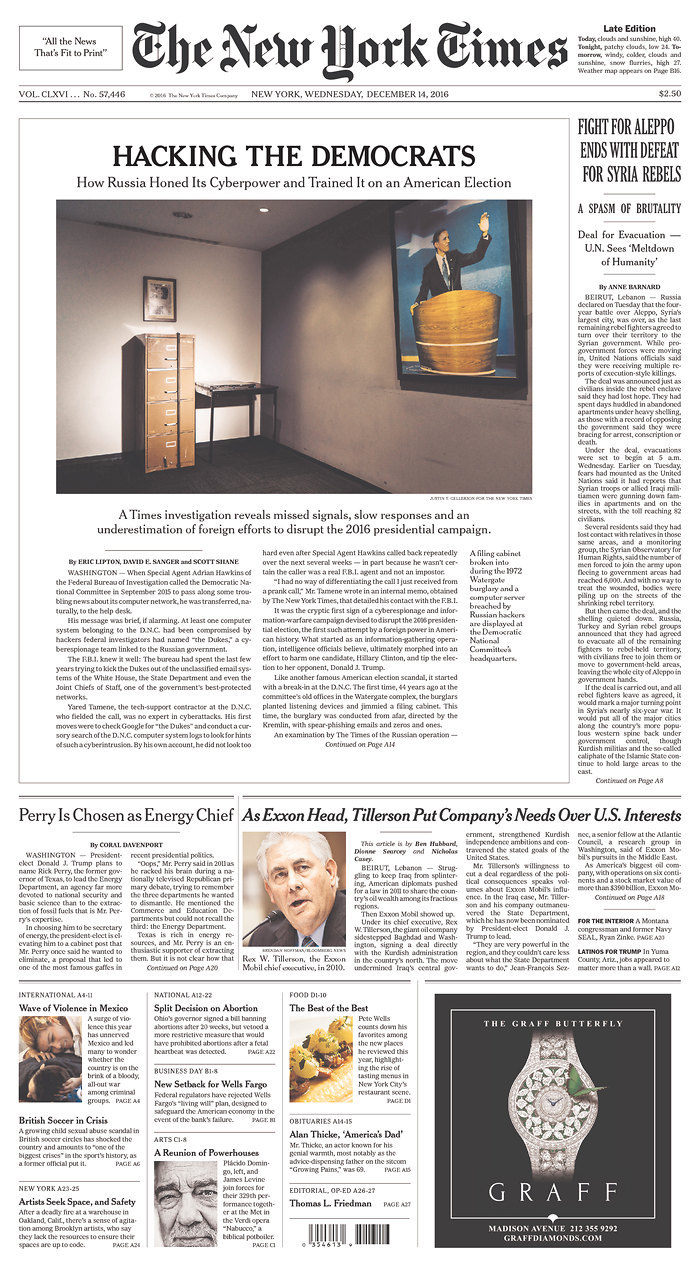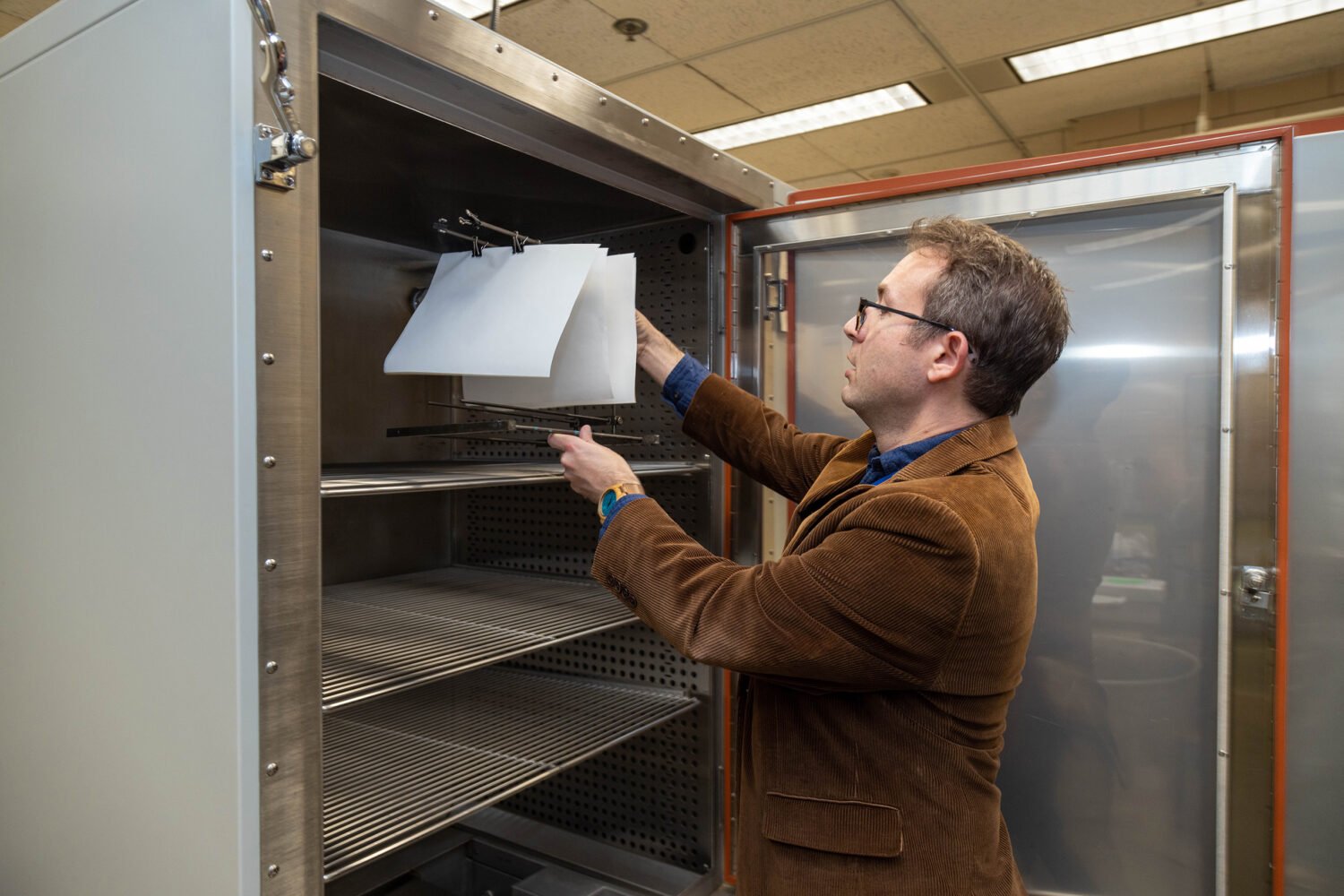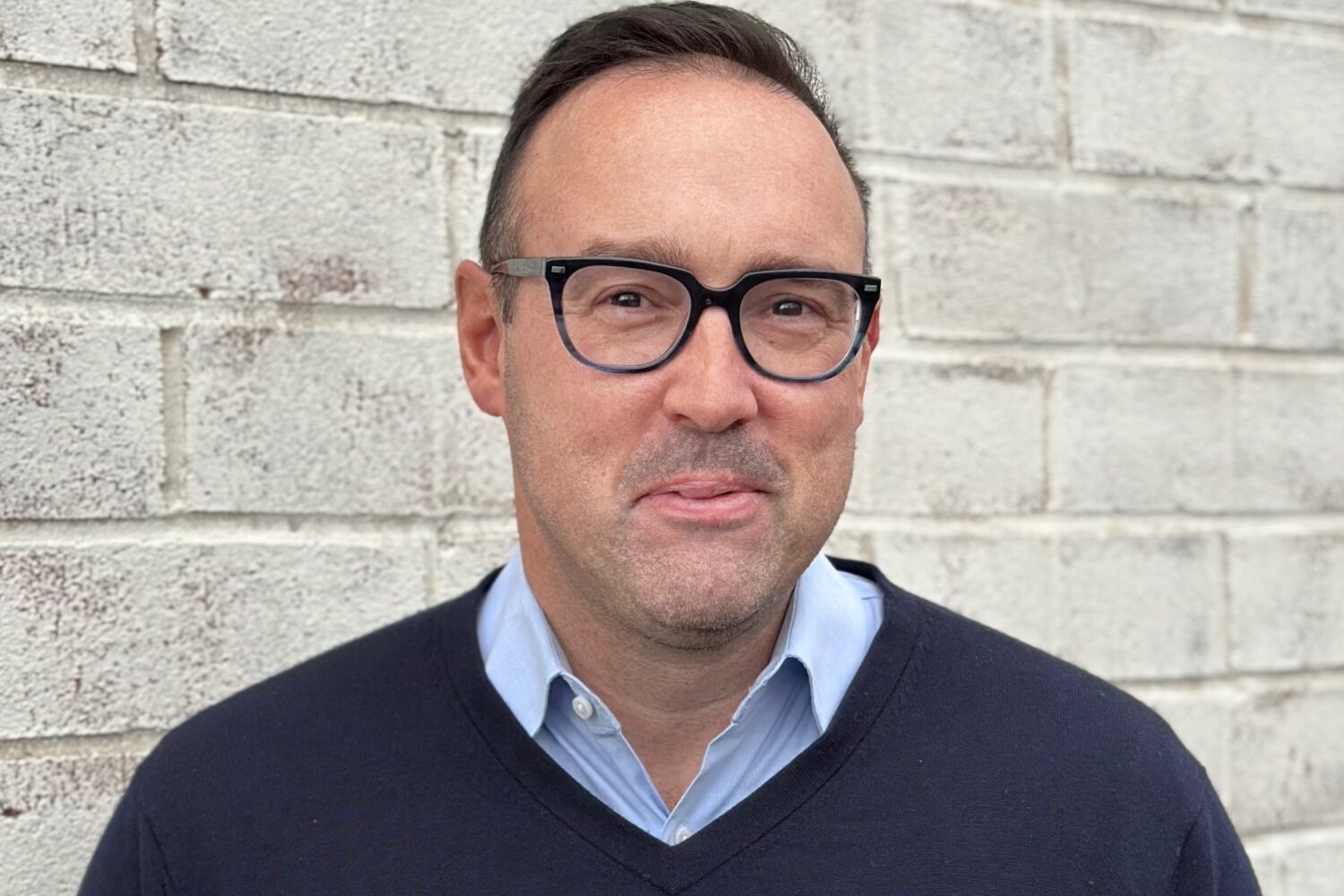An unusual correction now rides below the New York Times’s major story about Russian hacking in the November 8 election: “An earlier version of the main photograph with this article, of a filing cabinet and computer at the Democratic National Committee headquarters, should not have been published,” it says.
That’s a significant admission from any publisher. Why go there?
Because in the original photo, the “photographer had removed a framed image from the wall over the filing cabinet — showing a Washington Post Watergate front page — because it was causing glare with the lighting,” the correction reads.
News photographers reading this may have just gasped audibly. To anyone else, this may seem like a pretty odd thing to get worked up about. Why not remove something that’s screwing up the photo? (Also, what’s the deal with the Times removing a Post cover!)
In fact, organizations such as the National Press Photographers Association expressly forbid changing the circumstances under which a news photograph is taken. Portraits have different rules, however—most news organizations would think it’s fine to, say, move a piece of furniture around if they were shooting a portrait in a hotel room, for instance. And portraits are what DC photographer Justin T. Gellerson generally does for the Times.
The story of the filing cabinet correction is “not nearly as glamorous as I think you want it to be,” says Beth Flynn, the Times’s deputy editor of photography. Gellerson got instructions to capture the atmosphere of the room at the DNC where the file cabinet was located, and make it “somewhat poetic” if possible. “I think that was misinterpreted that we did not expect it be a news photograph, which we actually did,” Flynn says. Reached by phone, Gellerson confirms the instructions and says he encountered a terrible and distracting glare when his strobe hit the framed picture.
So he removed it from the wall.
“I really just wanted to nail it with this file cabinet,” Gellerson says. “I approached it like I was taking a still life.” Had this been a breaking news assignment, Gellerson says he’d never have dreamed of changing anything in the room. “The idea is to make someone feel something when they see this photograph,” he says. “There’s a picture of a file cabinet, and there’s a picture of a file cabinet.”
If a file cabinet can have a soul, Gellerson found it in the gorgeous original photo.
The DNC was first infiltrated at Watergate by force and with listening bugs. This time it was with phishing emails https://t.co/Fb17YXzF6E pic.twitter.com/CMyhGH9X8A
— NYT Politics (@nytpolitics) December 13, 2016
The story had been up for a couple of hours on Tuesday, Flynn says, when a masthead editor in the daily Page 1 meeting noticed that the Post front page, which is mentioned in the article, was missing. The Times photo department called Gellerson and requested him to return to the DNC as quickly as possible to reshoot the room. He rushed over from his home in Petworth; the resulting photo is atop the article now, and it’s also the one that ran in the print edition Wednesday morning.

The Times’s photo editors worded the caption extra carefully to avoid any suggestion the original image had been digitally manipulated. And, uh, was there any talk about the object in question being a historic front page from a Times competitor? “Oh God, no!” Flynn says, laughing.


















